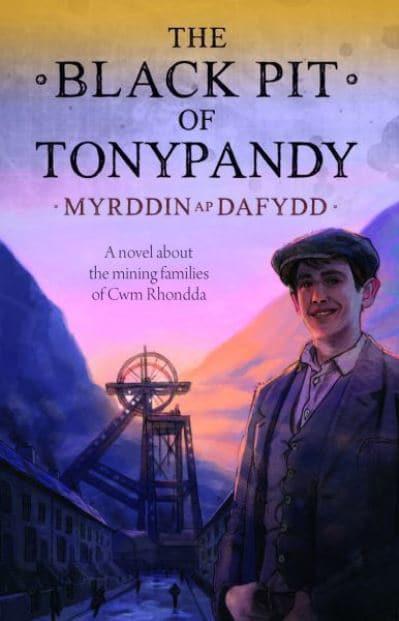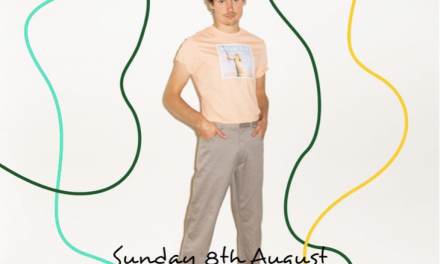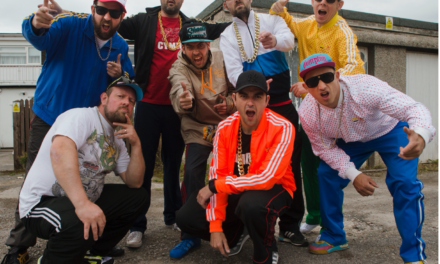Reviewed by
Rob Jones
In 1851, 2,000 people were scattered around the Rhondda landscape with agriculture and farms being the main focus of life. Sixty years on and the dramatic development of the coal industry resulted in 152,000 residing in our area. However, the population boom was also during a time of severe deaths e.g. 2,410 in 1914 and half of those losses were under 15’s with the Rhondda having the highest infant fatality rate in the UK.
As the valley grew so did a lack of substandard housing and clean water plus there were sewerage issues, poor food, starvation, poverty and overcrowding in small homes. All of these factors led to both disease and death.
In 1910 history indicates it was a turbulent time in the tale of Tonypandy as the renowned riots occurred in November of that year. Droves of workers were not happy with their treatment by wealthy employers and they had every right to stand up and be counted as their work conditions were pitiful and the payment received for their immense toil was scandalous. Each miner was getting two shillings and three old pence about eleven pence in today’s money for raising a ton of coal!!!
The facts are that the Cambrian Combine miners refused reduced pay, as better working conditions were also demanded; and, as a result all 12,000 Cambrian employees in the Rhondda went on strike. Strike action had started in August but three months later it was a much bigger affair. Mine owners introduced blackleg labour (which pushed the regular workers to one side), and the striker’s dismay led to clashes with the police at The Glamorgan Colliery and Pandy Square. Shops were savaged and merchandise was looted; and, on November 7/8, 1910 the famous ‘Tonypandy Riots’ occurred and one man was to die in the bloodshed with many more injured, including mostly miners but also police.
Home secretary, Winston Churchill sent in forces that were well over a 1000 in number including a range of police plus troops to Tonypandy, and many arrests followed. Guns and bayonets were there to be used. The violence did diminish, but the strike continued until the men returned to work in September 1911 (and, they had to settle for a poor pay deal offered nearly a year before in October 1910).
However, the striker’s call for rights was a benchmark and the British government was now aware of the plight of the Welsh miner – as well they should have been. In response, ‘The Miner’s Next Step’ (1912) called for improved pay and enhanced employment terms, but progress was not forthcoming. ‘The General Strike’ (1926) again highlighted the plight of coal workers as the South Wales mining workforce dropped from a peak of 218,000 to 194,000 (1926-7); and, this decrease was to continue with haste. From 66 active Rhondda collieries this number dwindled and by the end of the 1990 there were none.
The Rhondda has now been without a working pit for several decades and the history of an industry upon which our valley was built is the domain of the Heritage Park in Trehafod. A trip to this site is well worth investigating and this place gives ideas as to what it was to live in an era during which the Rhondda became a world famous place because of its black diamond i.e. coal.
A hundred years before as the 19th century developed there were two Rhondda Valleys with a limited number of residents and an agricultural background. Towards the latter stages of that period mines were sunk and the population grew so quickly and with such high numbers. By the 20th century agriculture was not as important although farms were still operating but it was the heavy industry of coal mining that ruled supreme. As the 21st century is with us we have a different landscape with tributes to the mining past such as the statue of the miner, his wife and child outside Asda in Tonypandy and other tributes throughout the valley, e.g. The wheel and the memory of the coal seams in the Clydach Vale Countryside Park – which has turned a region scarred by the mining industry in to an area of natural beauty with a couple of lakes and lovely scenery.
‘The Powerhouse’ which is sadly falling apart sits opposite the Asda statue and such a building should be restored as it is an important part of the story of the Rhondda and its coal legacy. Just down the road from here if you look up from the main road outside Llwynypia Boys & Girls Club there sits a 7 foot 6 inches statue and this one honours coal owner Archibald Hood (1823-1902) who was a significant figure and is responsible for ‘Scotch Houses’ a.k.a. ‘The Terraces’ – the homes built for his workers which overlook Asda and are still occupied to this very day. Hood was regarded as one of the more caring owners but still his workers slaved for poor pay.
There is so much more to the coal story and the majority of streets around us called ‘ribbon settlements’ appeared in order to house miners and their clans. The streets looked like lines of ribbons and the Rhondda went from a population of 542 in 1801 to an amazing 162,729 in 1921. From then on mining started to dwindle and the numbers of people living in the Fawr and Fach valleys of the Rhondda dropped and by 2001 the total was 72,443. So, in 200 years there has been a massive rise in people because of coal and a significant fall off because of the closure of mines and a failure to replace those jobs with another large employer.
| 1801 | 542 | ||
| 1841 | 748 | ||
| 1851 | 951 | ||
| 1861 | 3035 | ||
| 1871 | 16914 | ||
| 1881 | 55632 | ||
| 1891 | 88351 | ||
| 1901 | 113735 | ||
| 1911 | 152781 | ||
| 1921 | 162729 |
Myrddin Ap Dafydd* has written a story with a local influence – even though he is not from the area as his birthplace and residence is in the north of Wales. His skills have led to the creation of The Black Pit of Tonypandy (published by Gwasg Carreg Gwalch). The contents of this novel help describe the ways of the world when it came to a yesteryear Rhondda mining community. The text delves into how that period of industry cast its wand over the many families whose lives depended upon the quest for king coal and how they sadly became a means to an end for the wealthy and uncaring.
Myrddin’s mind brings to the fore the Lewis family and their lodger who lived at no. 17 Eleanor Street, Tonypandy and also the Mainwaring family who mainly live seven doors away at no. 24. Both families are mostly reliant on the coal industry for their livelihoods. It is 1910, a rocky year as the miners battle for better pay rates and improved work surroundings. Tonypandy and many local folk are caught up in this rollercoaster existence. At this time people from far and wide came to live in The Rhondda and not all were employed in the collieries. Other services were required and there was a rich heritage of cafes – and many were run by Italians who moved to Wales. One such clan the Bertorelli’s also play an important role in the script.
It was like a period like no other before in this community as different cultures mixed and people helped each other out but of course as is the way of human life there were also arguments and aggression. The writer manages to capture the feel of life both above and below ground and the effects of a time where there were no fanciful luxuries – as survival was the chief ambition. A house with food on the table and clothes on the back of the occupants was the real deal. There were cold, bare, floors, no central heating or piping hot radiators providing warmth on cold days. Fresh, clean, safe to drink water was not always possible. There were no nice carpets, fancy cookers, microwaves, fridges, freezers, televisions, Internet, phones, computers, cars, downloads, technology or luxury holidays. Beds were shared between brothers and sisters, may be cousins and there was little chance of your own room unless you were from a really small family and most properties were packed to the rafters. In the book eight lived in the Lewis home and six at the Mainwarings.
There was no path to examinations or little chance of school to 16, 18 or beyond as Guto Lewis started life underground at 14 with his friend Dicw Mainwaring also working underground! Can you imagine this world?
Books were really important as was the church and work was the means to money – even though the amounts earned were not enough to offer a nice or comfortable life.
Many of the workers had to struggle in the dark and damp with danger being to the fore. The mining records which are stored in the reference section of Treorchy Library record the accidents, injuries and deaths that occurred underground in those black pits. In the decade up to 1910, about 50 Rhondda miners per annum lost their lives while attempting to earn a living in Cwm Rhondda (it is a horrible, terrible contradiction!). The accidents follow a similar pattern with injuries and fatalities occurring as falling rocks and coal fell daily from the mine ceilings but still there were no improvements by the rich who lived in luxury at the expense of their employees.
The coal was brought up through the dark into the light via seams but the local landscape was not an easy one to achieve what was required. This meant that excessive money needed to be spent to release that fuel into civilisation. The expenditure to excavate coal came to the cost of the miners who had to accept poor wages and strive to survive in awful, risky surroundings. Even more unfair was that the miners of South Wales were paid less than their counterparts in England and Scotland, and that often came after working more hours.
Underground it was extremely tough for the brave and industrious but it was alarming that in the Rhondda more young women and children died than miners. In 1914, those 2,410 deaths of under 15’s. Infant deaths in the Rhondda outscored anywhere else in Great Britain. Poor housing offering cramped conditions – even though it was many years on a house in Tonypandy had 13 people living there and it was comically called ‘The Ritz’ – after a posh London hotel – when it was the opposite in terms of comfort and class.
However, in 1910 large groups in one house was common nature and that led to illness being passed on regularly. Bad health was to the fore with people not getting access to regular clean water and there were sewerage problems which again caused disease. Poor diets were also to the fore and these factors led to illness that spread with vigour. The Black Pit from Tonypandy takes you to this arena of adventure – both positive and negative – where every employee plus their nearest and dearest had to fight constant battles just to get through each day but the sense of the coalface mining communities pulling together was crystal clear.
Those times seem distant when there was so much despair and disappointment – and, yet perhaps with the pandemic so many have suffered similarly desperate fates which have been beyond our control. A different disease for a different time, but at least those fortunate enough to go through lockdown without serious illness or death had creature comforts e.g. TV or the Internet.
However, thank goodness we will not have to live in a Rhondda of 1910 with nothing but a struggle for food, drink, clothes, rent and so much more that may not be the case today for us all but can still exist. In retrospect it is important that we look back in order to look forward, so please read The Black Pit from Tonypandy and think that members of your family who may have come to settle in our valley had to experience a life that was cruel where every day was an extra day because nobody knew if they would live or die because of the mayhem of mining on our doorsteps. It was also a period where there was not the National Health and that meant that you had to pay for the doctor when there was less money around!!! We also have free prescriptions now to offer us medication to help when we are ill. There is also support for people who may not be able to work or who cannot find a job and that help was not available in 1910.
Our world over 100 years on is so much different even though there are still persons who suffer hardships but there are less people in Wales who do now than then. We still need to help those who need help and there is always a need for more jobs. However, the chance to get a good education is apparent and in 1910 only a few if any would have had that opportunity. It is a privilege to have a good start in life and schools that cares for children are aplenty and that gives many youngsters a chance to do well when the teachers are interested in their welfare. There was a lot more discipline in 1910 and even as recent as the early 1980’s children may receive the cane or a dap or a clip around the ear if they were naughty. I remember! In 1910 that cruel fate was even more apparent and of course these times have changed.
Today, we have so much to be grateful for, so everyone should make the most of their days at school because think that if you were a Lewis child that it may be the mine for the boys and perhaps a job in a shop if you were a girl. As a female adult there was also a chance you would be a busy mum to several kids and that workload would be 24 hours a day every day! <
Each penny and each hour counted in a quest to survive and there was little times for rest and relaxation. Illegal and brutal boxing matches were held where the fighters would get cut up for a little money and the crowd would bet their pennies to earn a few more pennies. More injuries were gained just to get a few more coppers in the pocket. Family members may make cakes to sell in the Italian café or take out the ice cream cart and sell fancies for the Bertorelli’s just to try and raise some funds.
It was tough, tougher than we will ever know. I find the world of 1910 hard to come to terms with but for the youth of today it must be even more difficult. I can remember no central heating, no radiators, no microwaves, no Internet, no colour TV and other things that we now accept as normality – but, for the Lewis and Mainwaring family they were dealing with a day to day drama that was fact but now seems like fiction. The Black Pit of Tonypandy is a story but it was also a reality.
· Here are some potent quotes from the book:
· ‘It is us the miners who have made the valley what it is and we’ll own it eventually’
· ‘We can’t win if a thousand Mets help the blacklegs to keep the pits open’.
· ‘Poverty was apparent in this area’.
· ‘The pawnbroker is pleased we’re poor’.
· ‘Everyone’s in poor spirits. The shops are empty but full of goods and they’re stopping anyone from having anything. The high street shopkeepers all support the pit owners.’
· ‘Stones and bricks flying through the air, truncheons and sticks clashing …..swearing and groaning and organised cries. The shops have been smashed. Every window has been broken. All the food is being hastily loaded into boxes.’
· ‘Strewn across the pavements and into the middle of the road are tins of food, posh hats, fruit and shoes’.
· ‘Bloodied miners lie’ and also ‘Policemen…..with blood streaming down their faces’.
· ‘Too much owing – much less shopping. That’s how we play it in this shop’.
· ‘Some had been on strike for a year’.
· ‘Some the older miners breathing is laboured by the time they reach the top of the embankment. The pernicious dust caused by years of working underground in confined spaces without enough fresh air has filled up their lungs with coal dust’.
· ‘You can carry an infection without knowing about it. That’s how these horrible diseases are passed on so quickly, and we’re all living on top of each other’.
· ‘William sleeps in the bed at night and works the day shift and then lodger Alun sleeps in it in the day because he works the night shift’.
· ‘By now the whole street is ringing to the sound of hobnail boots’.
· ‘Oh no!’ She says, ‘something’s happened at the pit’.
· ‘There was no hope for Jerry Bach, poor thing’.
· ‘The fact that a higher percentage of children in Wales are growing up in poverty than any other UK nation suggest that there is no end to this story – not yet.’
All of the aforementioned make this book imperative reading for everyone who has a social conscience and a beating heart. Well done Myrddin for your extensive research, storytelling skills, mixing fact and fiction in order to create a defined genuine and honest appreciation of a challenging era. As a result the audience can share in a cultural, historical and social tale of some significance!
*NB Myrddin Ap Dafydd is a prolific writer with his work appearing in both the languages of Welsh and English. Myrddin is a man of many talents and he owns a publishing company which brings his written work and others to the public. Myrddin is a chaired bard which has had his poetry celebrated at the National Eisteddfod of Wales. To add to which this acclaimed author is also the Archdruid of Wales. In this elevated role he is the presiding official of the Gorsedd. The Archdruid presides over the most important ceremonies at the National Eisteddfod of Wales including the crowning and chairing of the Bard who is the most celebrated performer in a style of poetry that is important to Welsh culture. He has written for youngsters and adults and he has also been the Welsh Language Children’s Poet Laureate – another high honour. To add to which he has compiled lyrics for songs aimed at youngsters. Myrddin founded the Gwasg Carreg Gwalch publishing company in 1980. He is also a director of a brewery and an art gallery. It just goes to show how interesting life can be if you follow different interests and take on a range of challenges. Myrddin is a good example of making the most of our days and having variety in our existences – all of which can make this time on earth a lot more rewarding.





